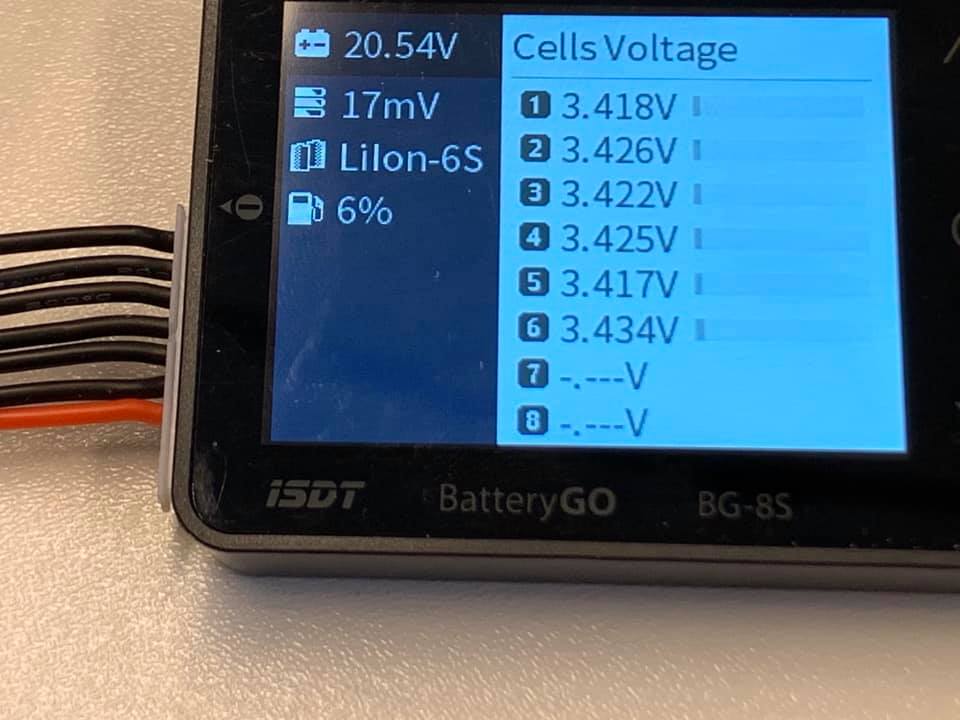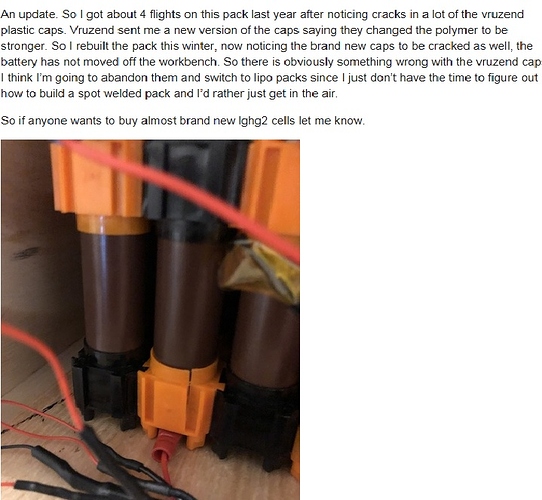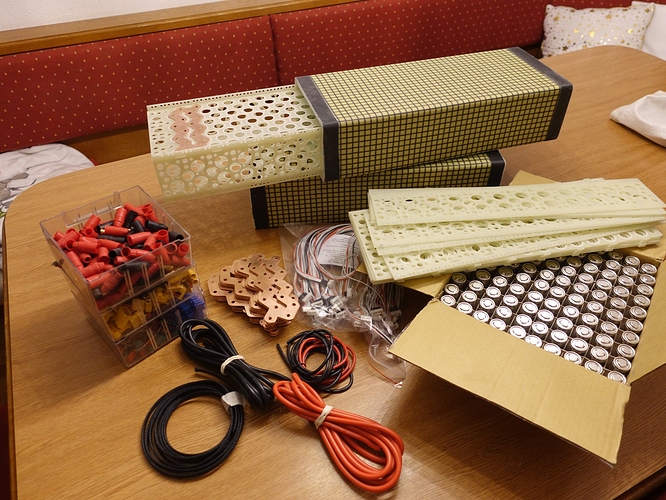30Ampere if i remember right.
It is a normal 6S12P with two pieces configuration.
I use Samsung 18650 Q30 Cells with 3000mA and a maximum from 15A discharge current.
So, the maximum discharge current for each 6S12P
cell is 90A
The hole system is designed for >200A.
Only the fuse ( a marine waterproof resettable ) ist 150A.
I think he mean for batterie holder
Ok. Yes 30A
20 characters
please be aware that your technique of connecting cells is absolutely only for desk applications. in an e-foil you have very high g shock loads when you jump off the board. it is cheap plastic that can be very dangerous. be sure to check your application a hundred times before using it, for example. stored in a house. just meant well.
Thanks!
My plan is, build soon a 12a14p Batterie. I have enough space in my housing.
I will buy a spot welder and do it like most.
I think I can save a lot of weight too 
hi, ich leihe dir gerne eine semi-professionelle punktschweisanlage. wenn du willst. melde dich einfach. vg
Das ist aber ausgesprochen toll von Dir!
Ich komme gerne auf das Angebot zurück!!!

you can pick up and borrow the device at any time. i bought it a few years ago. I only use it for battery repairs for e-bikes etc. I solder my foil and flight batteries. I have added a worktop that fits exactly for the battery construction of 18650 cells. the total size is approx. 90 cm / 50 cm. fits in any car.
I have added a worktop that fits exactly for the battery construction of 18650 cells. the total size is approx. 90 cm / 50 cm. fits in any car.
Do you solder 18650 cells? Or do you use other batteries for your efoil?
Okay, deal!
Thanxs a lot for you HELP!
First i want finish now tha mainparts and see if i can fligh. I hope i can start with foiling around start of May.
When all is working well, i will change the batteries and a spotwelding machine from you helps a lot!
Also i think about laminating bottom and top plate. I want reduce weight.
yes i soldered 18650 cells from 2014 - 2019, ( around 5000 cells in packs from 14 S / 10 P - 15 S / 25 P.) since 2019 and now, only 21700 cells. Samsung 40 T & Molicel 42 P
How do you like the 21700? How many cycles do you have on them, and what power/cell do you use?
the 21700 are much better than the 18650. I pull up to 5 C from the cells. on average 1-3 C. I did many endurance tests with 200 cycles or more. if you stay below 3 C, only a loss of capacity of 3 -4% is measurable after 200 cycles. I have already written something about this in many other postings here as well as on my facebook page.
Are the molicell eaqual to the samsung quality vise?
Why do you prefer soldering over spotwelding? More contact area or does it have other benefits as well?
I mainly use batteries to fly with e paramotor. only 100% security is possible there. When soldering, I know exactly what I’m doing. With spot welding you never have a guarantee if it is done by hand. I have already seen batteries burn from others who do it badly or with china batteries. the other point is the performance. a battery soldered with copper connectors is a completely different world than a battery with sheet metal strips connected to just a few small contacts. but spot welding is certainly a good solution for e-foil. you don’t need anything special here. example parts from
my new packs 15 S / 8P for flying and e-foiling Solutions.Wow that looks good! Can you tell me more about where to get this copper bars and other stuff? And wat kind of solder iron do you recommend?
I always do everything myself. I mill the glass fabric panels on my hobby cnc. I also milled the copper tracks myself until the end of 2019. this time i had the copper tracks lasered by a company. the soldering iron is a soldering iron from the roofer that requires 350 watts. I made the soldering tip out of pure copper on the lathe. you have to re-turn the tip every 200 soldering points. but it only takes 1 minute. I expressly say that you should only solder if you master the technology. you can practice on old cells. the process should take a maximum of 1 - 1.5 seconds. you can film it with a thermocam. Since the copper immediately takes away the heat, the cells only heat up to 30 -35 degrees Celsius on the pole. you always solder at intervals of 2 -3 cells. then there is no tension. the cell holders have a movement air of 0.2 mm for each cell. the cells themselves are spaced 1.5 mm apart. since the cells are put into “pocket millings” it is ensured that a complete insulation to the copper connector is ensured. the insulation is 0.4 mm. the glass fiber plates are 2.5 mm thick. that means the cells are 2.1 mm deep in the plate.


